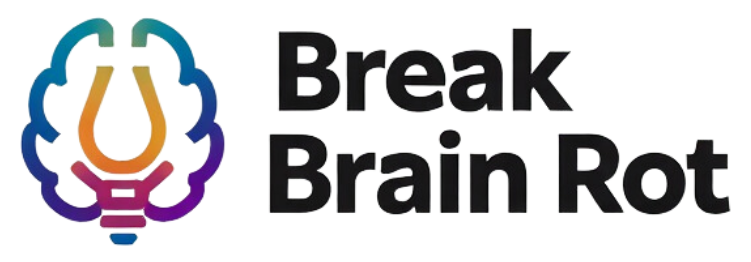Are you feeling overwhelmed by constant notifications, endless work emails, and a growing sense of burnout? It’s time to take control with a proven digital detox plan for work designed to reset your energy and productivity. In today’s digital age, maintaining a healthy work-life balance is more challenging than ever. Yet, prioritizing your mental well-being is essential for long-term success and happiness. This article outlines seven powerful ways to create a sustainable digital detox plan that will help you beat burnout, boost productivity, and reclaim your professional life.
Table of Contents
- Understand the Need for a Digital Detox in the Workplace
- Set Clear Boundaries Around Technology Use
- Optimize Your Work Environment for Minimal Distraction
- Integrate Wellness Practices in Your Digital Detox Plan
- Long-Term Strategies to Sustain a Healthy Work-Life Balance
Understand the Need for a Digital Detox in the Workplace
The Impact of Technology on Mental Health at Work
The digital workspace has many perks, but it also comes with significant challenges. The always-online culture can lead to burnout, increased anxiety, and reduced mental focus. The constant buzz of notifications interrupts work rhythms, leaving employees feeling frazzled and unproductive. According to a study by the American Psychological Association, workplace stress is often exacerbated by technology overuse, making a digital detox plan for work increasingly crucial.
Recognizing the Signs That You Need a Digital Detox
Do you feel constantly fatigued, unfocused, or unmotivated? These could be red flags signaling the need for a digital detox. Other signs include excessive screen time, strained relationships due to work spilling into personal time, and a persistent feeling of being “on call.” Acknowledging these warning signals is the first step toward regaining control.
Set Clear Boundaries Around Technology Use
Create No-Work Zones
Establishing no-work zones in your home or workspace can significantly improve your mental health. Simple rules like no laptops in the bedroom or shutting off work emails after 7 PM can create much-needed separation between work and personal life. This practice reinforces the boundaries of when and where work-related activities can take place.
Schedule Technology-Free Breaks During Work Hours
Planning regular, technology-free breaks during your day is essential. Designate your lunch break or quick pauses as “tech-free zones,” allowing your mind to recharge without the pull of notifications. These moments away from screens provide mental clarity and help you focus better on your tasks once you return.
Optimize Your Work Environment for Minimal Distraction
Declutter Your Digital Workspace
An overloaded inbox or unorganized digital files can be a constant source of stress. Cleaning up your digital workspace with tools like email filters, productivity apps, or organizational software can reduce overwhelm. Apps such as Focus@Will or Todoist are excellent solutions for staying on top of tasks without unnecessary distractions.
Reduce Multitasking and Focus on Single-Tasking
Switching between tasks can disrupt your focus and reduce efficiency. Instead, practice single-tasking and prioritize “deep work.” Turn off notifications and dedicate uninterrupted blocks of time to your most important tasks. Research shows that focused work sessions improve productivity and lead to higher quality output (source).
Integrate Wellness Practices in Your Digital Detox Plan
Incorporate Mindfulness to Recharge During the Day
Mindfulness practices such as meditation or deep breathing can help reset your mind. Apps like Calm or Headspace provide guided sessions that are perfect for short breaks during the workday. Pair this with intentional tech-free moments to reorient your focus and reduce overall stress.
Encourage Physical Movement as a Reset
Physical activity is a powerful antidote to tech overload. Simple practices like stretching at your desk, taking short walks, or even standing during long video calls can give your brain a much-needed reset. Studies suggest that regular movement improves cognitive functioning and productivity (source).
Long-Term Strategies to Sustain a Healthy Work-Life Balance
Develop a Weekly Digital Detox Routine
To maintain balance, create a weekly digital detox schedule. Dedicate one full weekend day or specific hours each week to unplug completely. This habit fosters deeper connections with loved ones, refreshes creativity, and enhances your mental health.
Establish Digital Etiquette with Coworkers and Teams
Communicate with your team about setting clear boundaries for technology use. Define expectations for response times and operational hours to discourage overworking. Collaboration tools like Slack and Trello can streamline communication while preserving focus, making them invaluable for maintaining digital etiquette.
Frequently Asked Questions
What is a digital detox plan for work, and why is it important?
A digital detox plan for work involves setting boundaries around technology use to reduce stress and improve productivity. By limiting unnecessary screen time and focusing on healthier habits, you can combat burnout and achieve better work-life balance.
How can I start a digital detox without hurting my professional responsibilities?
Start small by scheduling tech-free breaks, organizing your work environment, and communicating your boundaries to your team. Gradual implementation ensures you maintain productivity while prioritizing your well-being.
Are there apps or tools that can help me with my digital detox plan for work?
Yes, several tools can support your detox efforts. Apps like Freedom, RescueTime, and Forest help you stay focused, while mindfulness apps like Calm or Headspace promote mental clarity.
What are the long-term benefits of a digital detox plan for work?
A sustainable digital detox plan improves mental health, increases productivity, enhances relationships, and fosters a healthier relationship with technology in the workplace.
What if my workplace doesn’t encourage digital detox practices?
Even if your organization doesn’t explicitly promote detox practices, you can still implement personal strategies like no-work zones and tech-free breaks to prioritize your well-being.
Conclusion
In a hyperconnected world, implementing a digital detox plan for work is no longer a luxury but a necessity for reducing burnout and maintaining productivity. By taking intentional steps to set boundaries, optimize your workspace, and integrate wellness practices, you can regain control of your work-life balance. Start small today with one or two strategies from this guide and gradually transform your relationship with technology for a happier and healthier professional life.


